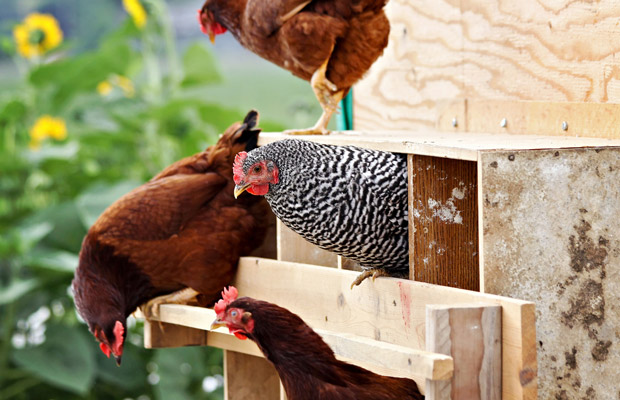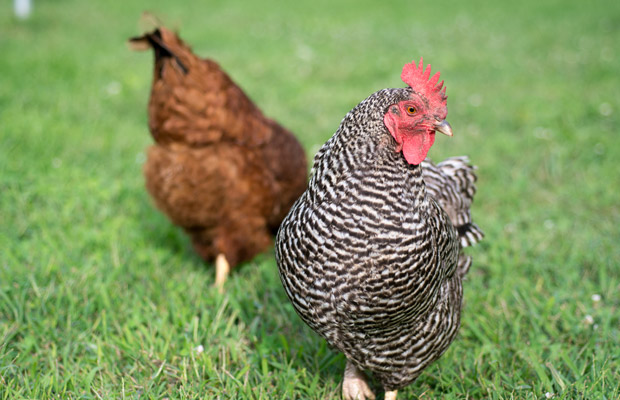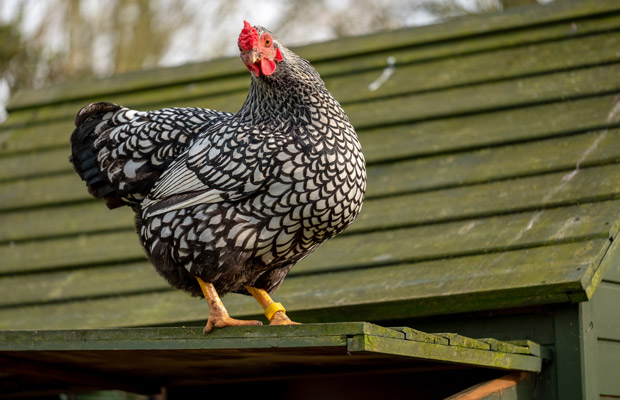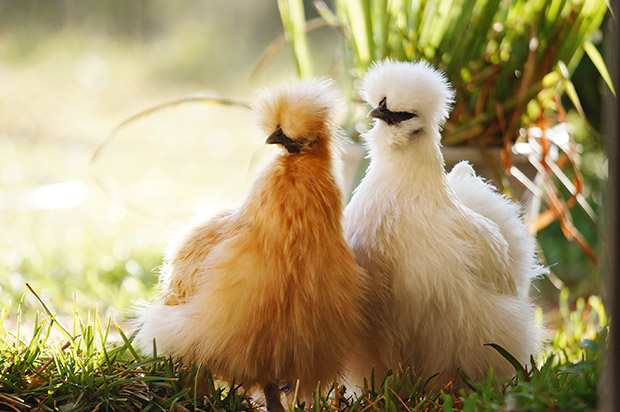6 common chicken disabilities (and how to treat them)

It’s important to look for a cause of a disability so you can avoid it in the future.
Words: Sue Clarke
Common disabilities include:
• blindness
• crossed (scissor) beak
• leg issues caused by disease, deficiency or accident
Some people go to extraordinary lengths to care for disabled chickens. It’s important to look for a cause of a disability, to try and avoid the same thing happening in the future.
The causes can include:
• nutritional deficiencies
• genetic causes (inherited)
• incubation and hatching problems
• accidents
Nutritional deficiencies
Any shortage of an essential nutrient can lead to deformities, including:
• curling of the toes
• dislocation of the joints
• poor feathering
• twisting of the neck
• inability to walk and feed normally
These occur in birds fed a vitamin or mineral-deprived diet, or chicks bred from parents fed a deficient diet. The best diet is one where at least 80 percent is a balanced, commercial feed.

Any extras like whole grains, kitchen scraps, and pasture should be a small part of a bird’s diet. Birds will fill up their digestive system eating bulky, low-nutrition foods, leaving no room for essential levels of protein, minerals and vitamins found in a balanced, commercial feed. A good quality diet is especially important for breeding stock. Ideally, offer breeding birds a mineral and vitamin supplement (usually added to water) as well.
1. Curled Toe Paralysis
Symptoms: toes curl inwards and downward.
Cause: vitamin B2 (riboflavin) shortage, which affects the nerves leading to the toes, and sometimes to the hock joint.
Treatment: soluble vitamins, including B vitamins, will help to reverse it.
2. Wry Neck
Symptoms: head flexes back over the body so the bird is looking upwards (also known as ‘star gazing’), twists to one side, or curls over between the legs. Birds often die from starvation due to an inability to feed properly.
Cause: vitamin B1 or thiamine deficiency; can also be a genetic predisposition, especially in breeds with crests.
Treatment: correct feed, plus vitamin E and selenium.
3. Perosis
Symptoms: legs extend at unusual angles.
Cause: deficiency of manganese, choline, folic acid and/or biotin. Grooves in the hock joints are too shallow, so tendons can move in any direction, instead of sitting tight in the groove.
Treatment: none, as even if the diet is correct, the hock joint cannot repair itself.

4. Cross beak, scissor or parrot beak
Symptoms: top and bottom parts of the beak sit an angle to each other, often gets worse as a bird gets older.
Cause: vitamin D3, biotin, and/or vitamin A deficiency in affected bird; imbalance of calcium to phosphorous; manganese shortage in parents.
Treatment: it can be possible to carefully clip overgrowth back, but be careful not to cut into the ‘quick’ which will bleed. Provide food and water in deep containers so the bird can dip its whole beak in, instead of just the tip. Check daily that the bird is getting adequate feed and is not being picked on by others. Syringe feeding is an option to keeping crossed-beak birds alive, but it must be done several times a day for the rest of the bird’s life.
5. Feather loss pecking, poor feather development, feather pulling
Symptoms: pecking or pulling (by the bird or other birds), poor feather development, naked tails, bleeding feather stumps.
Cause: methionine deficiency. This behaviour can be due to a shortage of methionine, an essential amino acid only found in animal protein (or a synthetic option, added to feed). Birds seek blood to supplement their protein-deficient diet. Organic poultry feed made without animal protein and without synthetic supplements can be a risk. Vegetarian-based layer feed, using soya beans as the protein source, should be supplemented with synthetic methionine to make up for this shortfall.
Treatment: feeding a completely balanced diet, appropriate to the age of the bird, will eliminate most of these problems.
6. Deformities
Symptoms: exposed brain, crossed beaks, split wings, wry tails, crooked toes, missing or deformed eyes.
Cause: genetic; incubation fault.
If you’re hatching chicks, you’re going to see genetic deformities. Exposed brain is more likely to be found in crested birds like Silkies and Polish which have improperly-fused skull bones. Crossed beaks can also be a genetic fault, or nutritional.
Split wings, wry (off-centre) tails and crooked toes can be genetic, and are likely to be passed on. However, they’re unlikely to physically disable a chick. Eye deformities or missing eyes can be genetic or an incubation fault. A blind chick is at a big disadvantage, but I have heard of people successfully caring for blind poultry. Incubation faults can cause a lack of down, or multiple or missing limbs.

Silky and Polish chicks are more likely to suffer from exposed brain due to their unusual skulls.
Problems during incubation that can cause deformities (or death of the embryo) include:
• fluctuating temperature
• temperature too high or too low
• wrong humidity
• lack of oxygen at various stages of incubation, especially the first 10 days
Faults are more likely to be fatal if they occur during the final stages of the incubation process. The incidence of common deformities in incubated eggs is about 0.3% of chick embryos that develop, but not all may hatch. There may also be a nutritional or genetic cause too.
Accidental disabilities: Some birds may lose a limb or toes by accident or from a bacterial infection. These can be rehabilitated, once the stump is healed. Loss of toes on one foot can be overcome, but if it is both feet then the overall welfare of the animal is severely compromised and euthanasia is the best option.
DEFORMITIES IN INCUBATED EGGS
If you get deformities, the most common deformities are exposed brains (29%), chicks without eye(s) (25%), multiple legs (27%), deformed beak (10%), no upper beak (8%), and deformed twisted leg (1%).
MORE HERE
How to properly care for an old chicken (or a hen approaching retirement)
Love this story? Subscribe now!
 This article first appeared in NZ Lifestyle Block Magazine.
This article first appeared in NZ Lifestyle Block Magazine.
